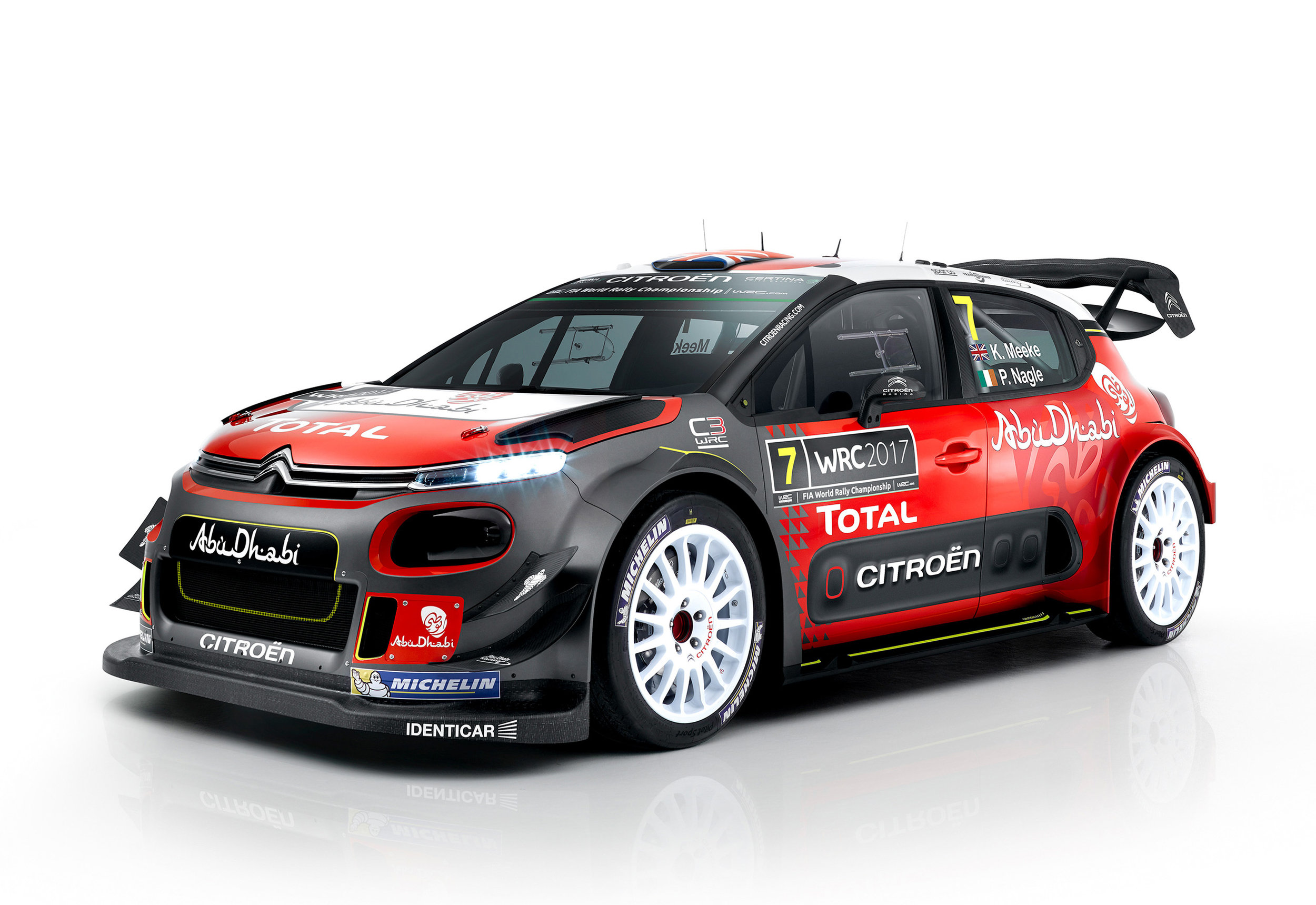
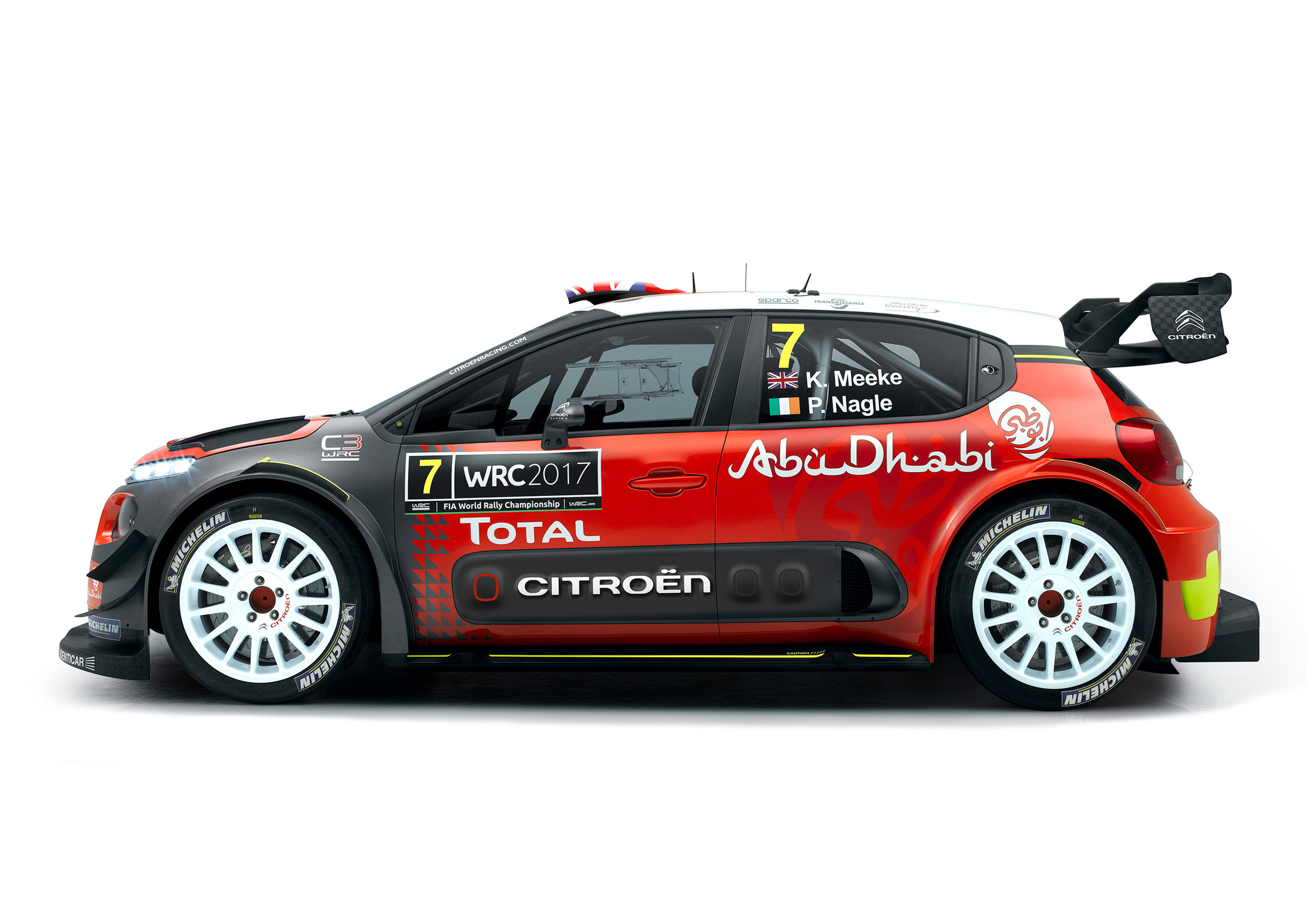
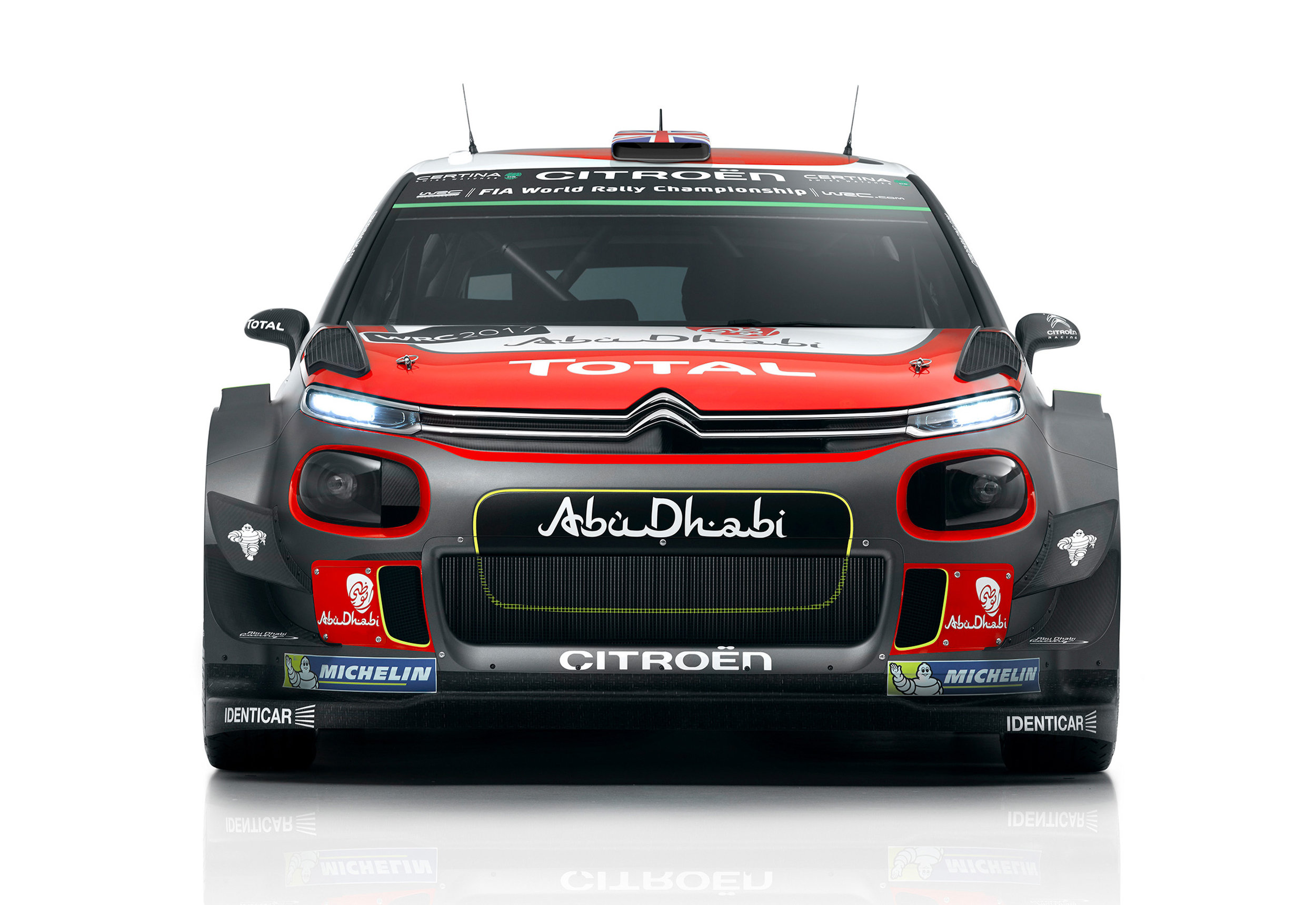
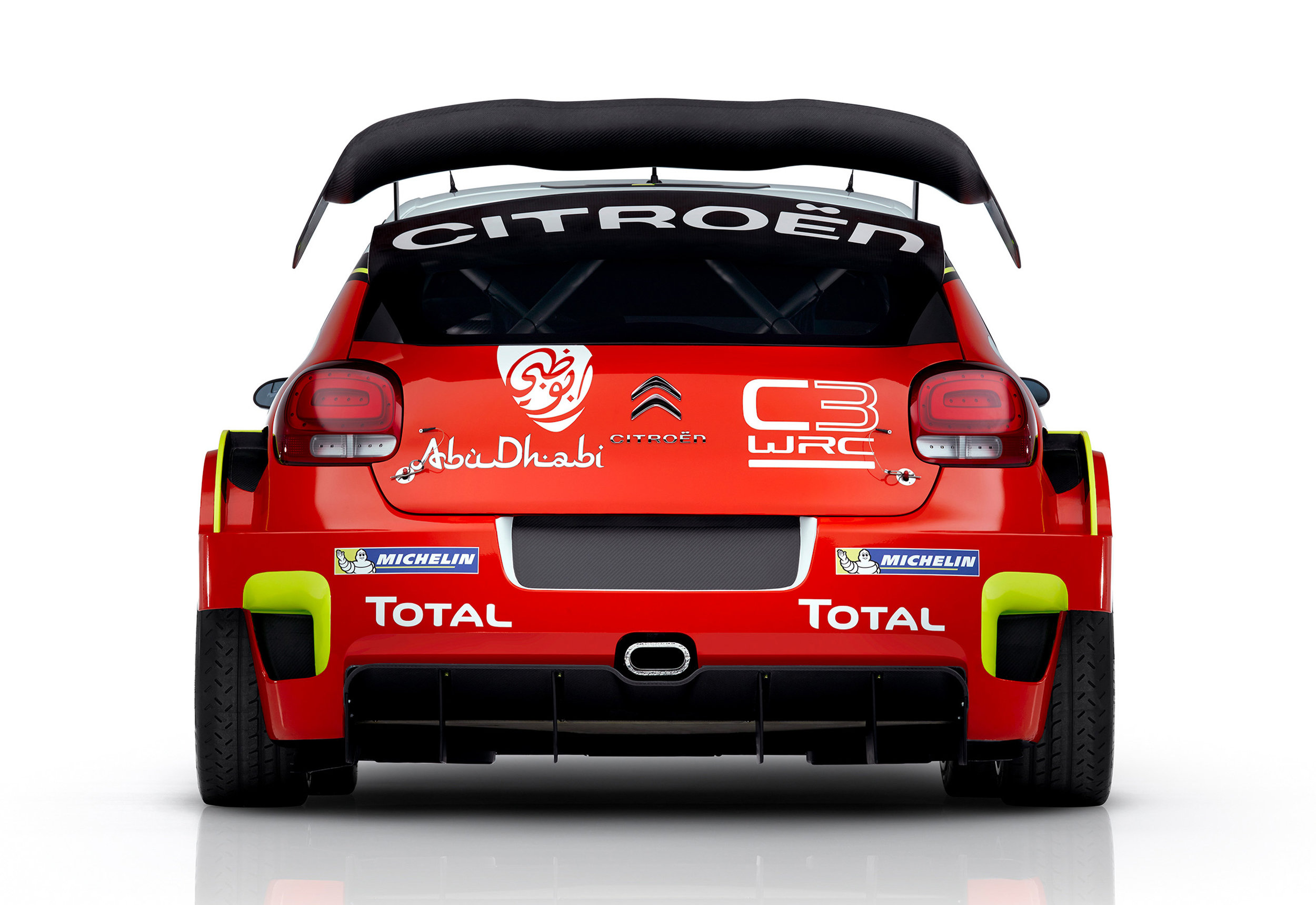

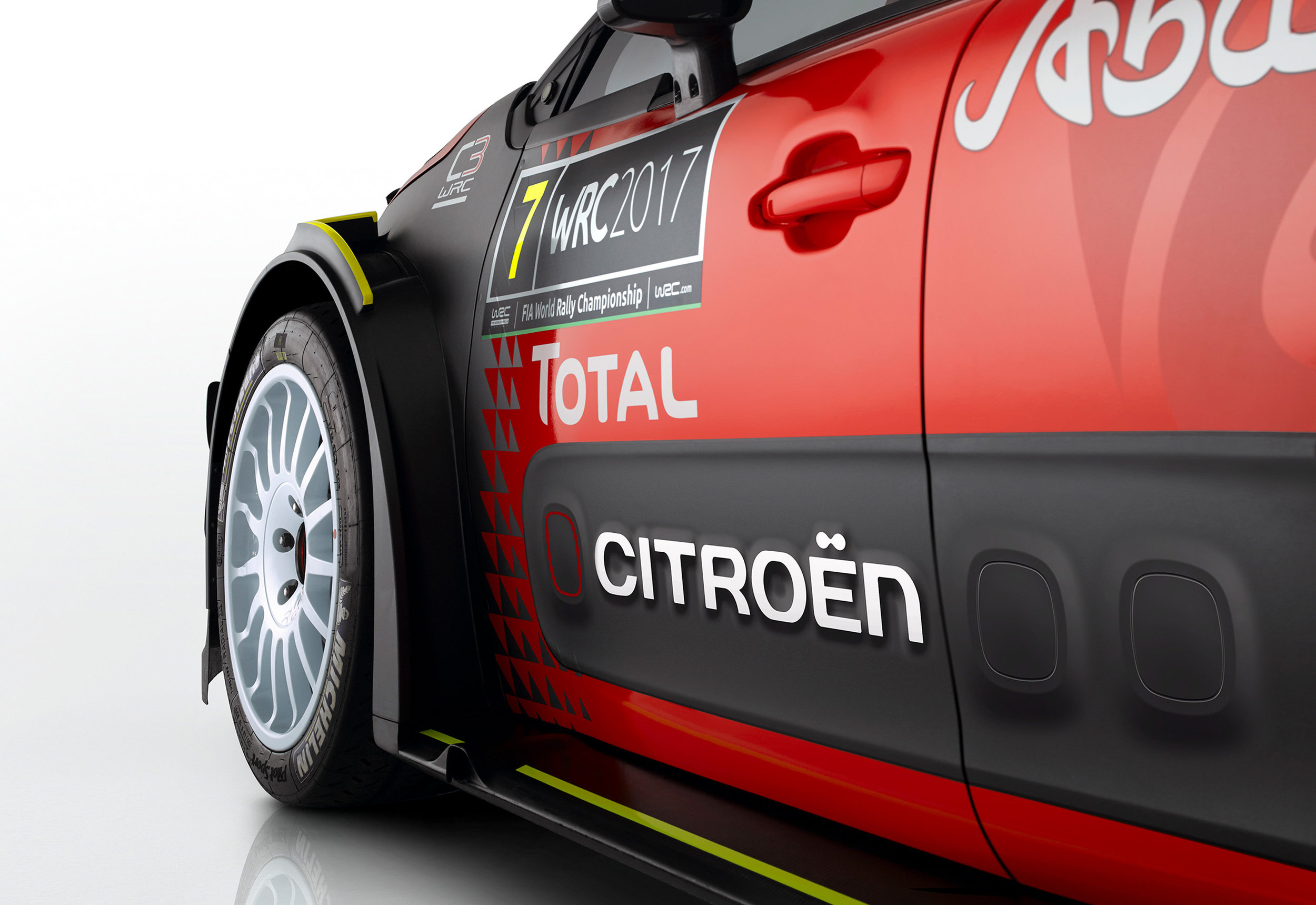


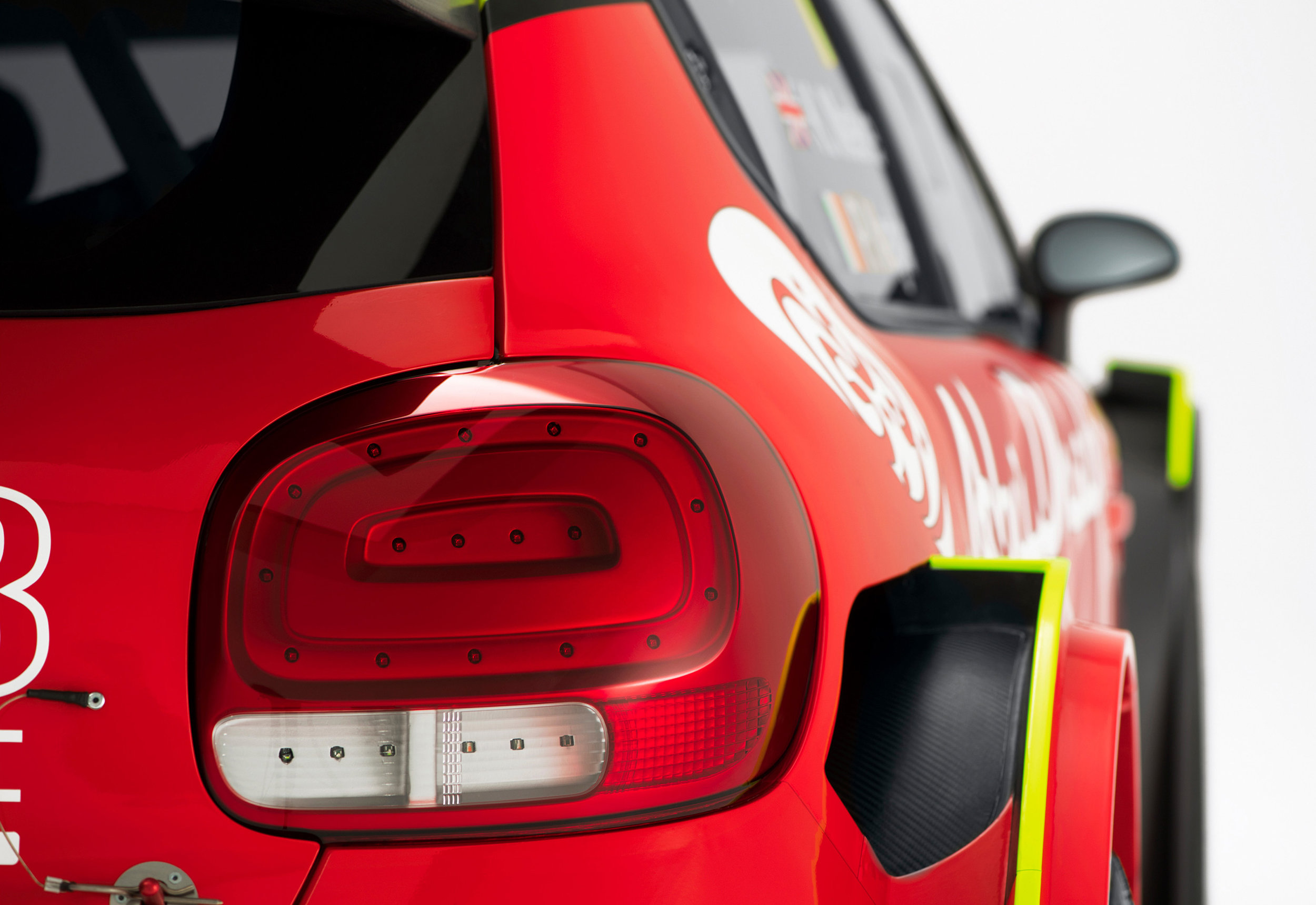
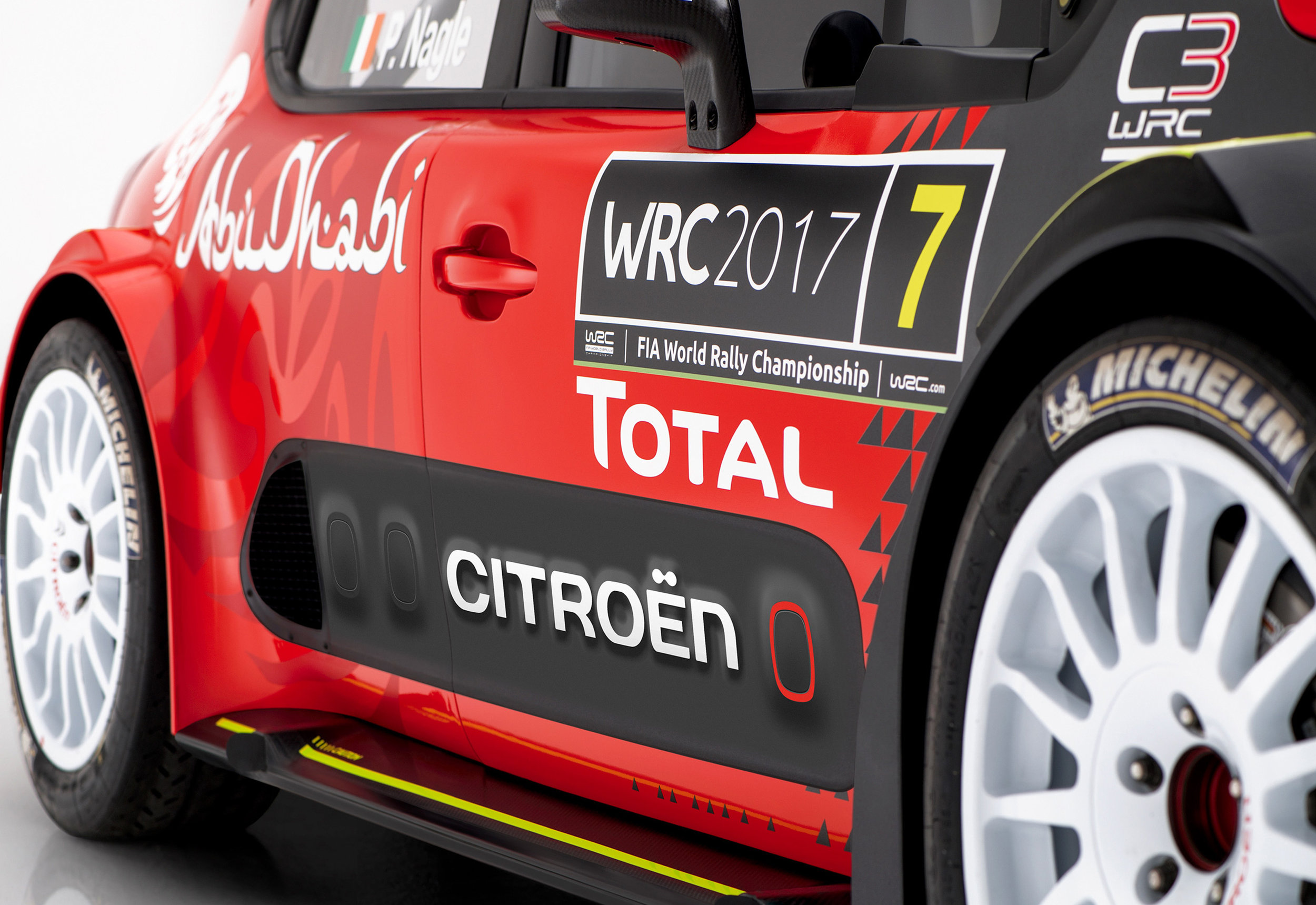
With less than a month before the 2017 FIA World Rally Championship (WRC) gets underway at Rallye Monte Carlo, Citroën Racing has unveiled its new C3 WRC in Abu Dhabi.
Complying with new FIA regulations, which see the introduction of a new generation of World Rally Cars, the C3 WRC heralds the return of Citroën to the Championship.
For the 2017 season, the Citroën Total Abu Dhabi WRT plans to enter between two and four C3 WRCs for its crews; Kris Meeke/Paul Nagle, Craig Breen/Scott Martin, Stéphane Lefebvre/Gabin Moreau and Sheikh Khalid Al Qassimi/Chris Patterson.
Fitted with wider wings, new aerodynamic features and four-wheel drive that now comes with a centrally controlled differential, Citroën says the new C3 WRC pushes back the boundaries of what has been done in the past with a power-to-weight ratio of 3.1kg/bhp, compared with 3.8 for its predecessor.
In the design office, evaluation of the new regulations and the structural design of New Citroën C3 began in April 2015. Six months later, on 19 November, when Citroën confirmed its participation in the Championship, work began on translating the virtual C3 WRC – which already existed in CAD form – into the first running prototype.
In April 2016, Kris Meeke drove the car on its first outing at the Versailles-Satory track. Shortly afterwards, the team set off for the south of France, where the first test session was held on the gravel roads around Château Lastours. The car was disguised with a special "camouflage" livery designed to hide the styling features which had yet to be unveiled at that point.
Development work continued on a variety of surfaces over a total of ten test sessions covering 9,500 kilometres, with the final, critical stage before the car's competitive debut – homologation by the FIA – completed on 13 December.
Citroën Racing has been developing and building its own engines since 2010, in line with FIA Global Racing Engine (GRE) regulations. The architecture, based on a four-cylinder 1.6 litre direct injection turbo engine, allows manufacturers to use their technology across several championships.
This latest powertrain once again uses a machined, aluminium cylinder block but with an anticipated performance boost for 2017 thanks to a wider turbo restrictor – up from 33mm to 36mm – resulting in a power increase of around 20% to 380bhp. However, the turbo pressure limit of 2.5 bars means that the torque remains relatively stable at about 400Nm.
The structural design of the car is similar to that of its predecessors. The production body shell has been cut to accommodate the composite fibre rear spoiler, the roll cage, the transmission tunnel and the subframe supporting the chassis and suspension systems.
The new C3 WRC is Citroën's first World Rally Car to be based on a five-door body. The rear doors have been removed, but the configuration nonetheless required substantial work on the car's layout and ergonomics, says Citroën, in order to find the optimum position of the crew, taking into account factors such as weight distribution, visibility and, in particular, safety – which remains a central concern for engineers and FIA experts alike.
The doors have been reinforced with an additional composite fibre layer – acting a bit ‘like supercharged AirBumps’, says Citroën – while the interior of the doors are lined with a high-density foam designed to absorb energy and the headrests of the bucket seats also come with new protective mouldings.
In terms of details, the 2017 regulations have added freedom in a number of areas. The most visible of these is the increase in maximum width, which has risen to 1,875mm (+55mm), providing more stable handling and new aerodynamic options.
The four-wheel drive has undergone a major change, with the return of centrally-controlled hydraulic differential – a system previously used on the Xsara and C4 WRC – which allows the front and rear axles to rotate at different speeds.
The C3 WRC’s suspension geometry will be different for tarmac and gravel versions and the spring-shock absorbers are now tilted to increase travel.
The aerodynamic changes, made possible by the less restrictive regulations, actively contribute to the performance of the car. The additional downforce generated helps increase stability at high speeds, whilst the air vents provide cooling for the engine, transmission and brakes.
The new Citroën C3 WRC will make its competitive debut at the Rallye Monte Carlo on 19 January 2017.
